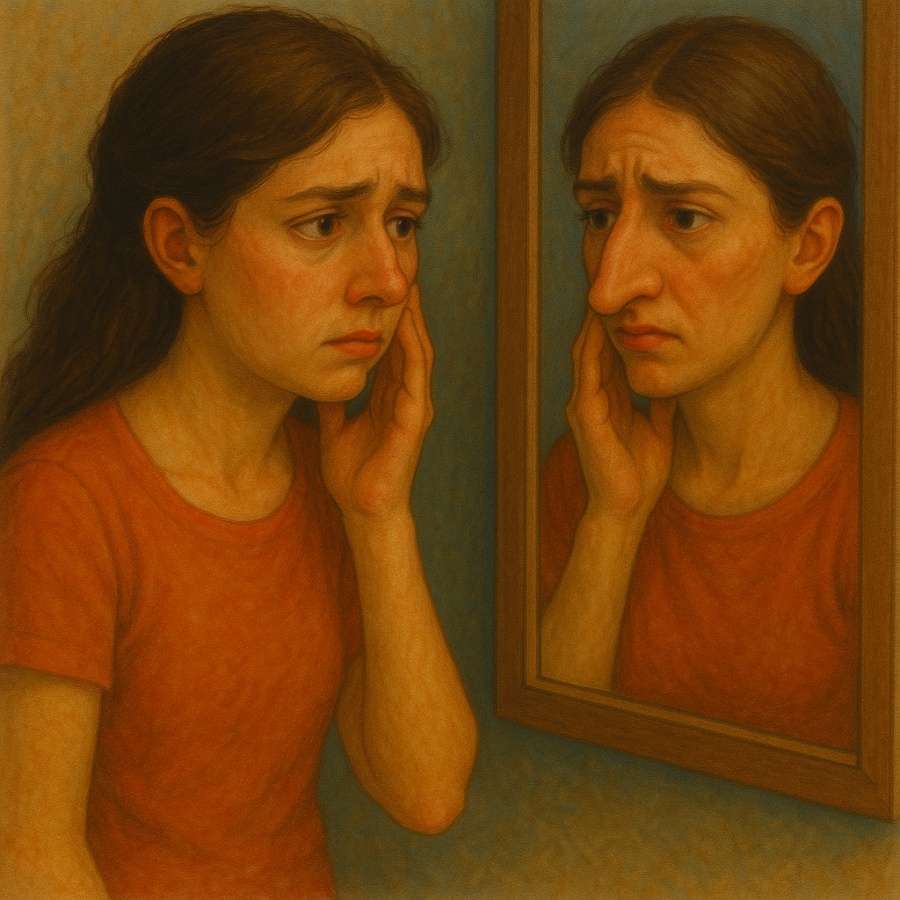
As part of this series of articles on Counselling and Psychotherapy one challenge for therapists that requires careful attention is differentiating between two related but distinct disorders— the Obsessive Compulsive Disorder (OCD) and the Body Dysmorphic Disorder (BDD).
Many clients may present with concerns that resemble OCD: intrusive thoughts, repetitive behaviours, excessive checking, reassurance-seeking, and avoidance. However, in approximately 2% of the population, these symptoms may be better explained by BDD. That is a disorder that shares surface-level features with OCD but is rooted in a very different emotional and cognitive landscape.
If you’re working with a client who appears to have OCD, always take a moment to check for BDD—because the right diagnosis can make all the difference to treatment outcomes.
What is Body Dysmorphic Disorder?
BDD is a severe and often under-recognised mental health condition in which a person becomes preoccupied with perceived flaws or defects in their physical appearance—flaws that are often invisible or trivial to others. This can involve the skin, nose, hair, body shape, or any body part, and the concern can shift over time.
People with BDD may:
- Spend hours each day thinking about the perceived flaw.
- Engage in repetitive behaviours such as mirror checking, grooming, skin picking, or seeking reassurance.
- Avoid social situations, photos, or even leaving the house.
- Feel ashamed, anxious, or even suicidal.
Dr. Katharine A. Phillips, a leading researcher in the field and author of The Broken Mirror: Understanding and Treating Body Dysmorphic Disorder, emphasises that BDD is not a “vanity” issue but a deeply distressing psychiatric disorder. Her research and clinical work, available at katharinephillipsmd.com, highlights that BDD can be severe, chronic, and disabling, and yet it is often missed—especially in general mental health settings.
Why Counsellors Often Miss It
One reason BDD is so often overlooked is that clients don’t always mention appearance concerns directly. Instead, they may present with social anxiety, depression, low self-esteem, or generalised anxiety. Or, as is frequently the case, they may be misdiagnosed with OCD, because their behaviours (repetitive checking, rituals, avoidance) look like compulsions.
However, in BDD, these behaviours are not about preventing harm or reducing general anxiety (as they are in OCD); they are directly tied to fixing or hiding a specific self-perceived defects in their appearance.
We invite Counselling students to learn to ask gently but directly about appearance concerns when OCD-like symptoms are present. For example:
- “Do you ever find yourself thinking a lot about a particular aspect of how you look?”
- “Do you feel that part of your appearance is wrong or defective in some way?”
- “How much time do you spend thinking about or checking this each day?”
These questions can help differentiate between OCD and BDD.
Treatment Differences: Why It Matters
Although both OCD and BDD are classified under Obsessive-Compulsive and Related Disorders in the DSM-5, (The Diagnostic and Statistical Manual of Mental Disorders) their treatment approaches differ in subtle but important ways.
Standard CBT for OCD often involves Exposure and Response Prevention (ERP) that addresses irrational fears and compulsions. While ERP is also used in BDD treatment, it needs to be tailored specifically to the appearance-related distress. BDD also tends to involve higher levels of shame, secrecy, and suicidal ideation, requiring a more nuanced and sometimes more intensive approach.
Moreover, cosmetic procedures, which some clients with BDD may seek, almost never help and can worsen symptoms—another important red flag for counsellors to spot and challenge.
As members of the lay public interested in counselling you are able to listen closely to family and friends, to pick up patterns, and suggest therapeutic support to those you love who are struggling with distressing thoughts, emotions, and behaviours.
Thank you for reading this. if you would like written advice on a personal issue please drop me a line.
🛑 Disclaimer:
This post is a social media newsletter and not a substitute for counselling or emergency support.
If you’re struggling with your mental health, please contact your GP or call 111 for urgent help.